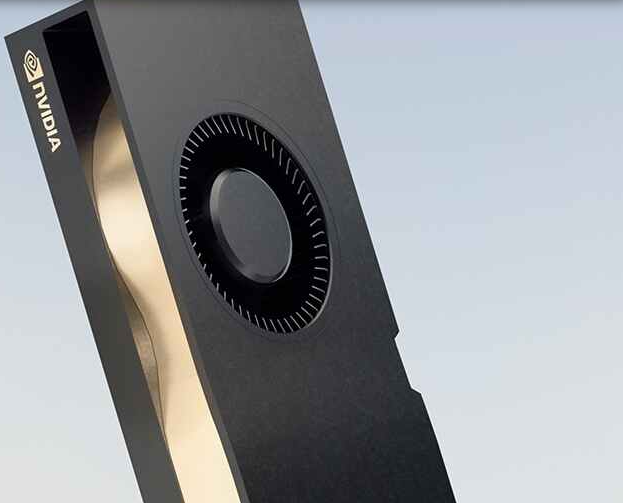
Sometimes it feels like users in the consumer GPU space get to have all the fun. With the launch of cards like the RTX 3070,3080 and 3090 more conservative workstation cards can feel downright stagnant. The 3090 in particular, offers such a good price to performance deal in workstation terms, that it’s surely tempted many professionals away from their Quadros.
Not to be beaten at their own game by, er, themselves, Nvidia announced a new series of RTX workstation cards, following the full-fat flagship RTX A6000 that started off this generation of workstation monsters. The Quadro brand seems to be on the way out at this point and these cards come with professional certified drivers and plenty of workstation-grade VRAM. So if you’re looking for something to replace that mid-range Quadro card (or perhaps better, these new cards are worth sitting up and taking notice for.
The RTX A5000 (A Slight Nip & Tuck)
While the RTX A6000 sports the full GA102 core with 48GB of ECC GDDR6, the RTX A5000 cuts the core count from 10752 to 8192. Clock speeds are also down, with the boost rating dropping from 1860MHz to 1695 MHz. Other than that, things are pretty much on par. The memory bandwidth on offer is exactly the same as the A6000, there’s just less of it.
One other major difference is in the number Tensor cores on offer. The A6000 has 336 of them, while the A5000 only has 256.
So far then, it seems like the A5000 is about 80% of the card you get with the A6000, which seems like a bad thing until you take the asking price into account. While an A6000 will set you back a cool $4650 (more or less) the recommended price for the A5000 is $2250. Now all of a sudden that apparently small specification differences doesn’t seem that important. Of course, we need to wait for independent benchmarks to see what the actual difference is between the cards, but considering that these cards support NVLink and you can literally buy two A5000s for the price of one A6000,it might actually be the sweet spot!
This is especially true since the latest generation of NVLink actually pools the memory of both cards, so two A5000s will have 48GB of VRAM to play with, not 24GB filled with the same data.
The RTX A4000
The RTX A4000 is not based on the GA102 chip. Instead it’s a full GA106, which offers 6144 CUDA cores, 192 tensor cores and 16 GB of ECC GDDR 6. The A4000 is meant to retail at $1000, which makes it an excellent choice for upper-mid range desktop workstations. Sadly, there’s no NVLink support, so you won’t be building a single super GPU from two A4000s. Even if you could the memory bus is significantly narrower compared to the GA102 chip, so there would be diminishing returns. We can however see plenty of mid-range workstation builds benefitting heaps from going with the A4000.
The Mobile Mob
Nvidia also announced a few mobile workstation chips: the RTX A2000, RTX A3000, RTX A4000 and the RTX A5000. Despite the overlap in names, these chips are far down the specification range compared to the desktop versions. While they’ll do nicely for workstation laptops, there’s a huge difference between an A5000 with 24GB of RAM and one with 16GB. Likewise, core counts and memory bandwidth are way down. It’s not surprising, given how power hungry the desktop cards are, but we really wish Nvidia wouldn’t use exactly the same names for mobile GPUs with such large differences under the hood.
What do you think of these new workstation GPUs? Are the prices attractive? Do the shiny new AI and ray-tracing hardware make it worth upgrading?